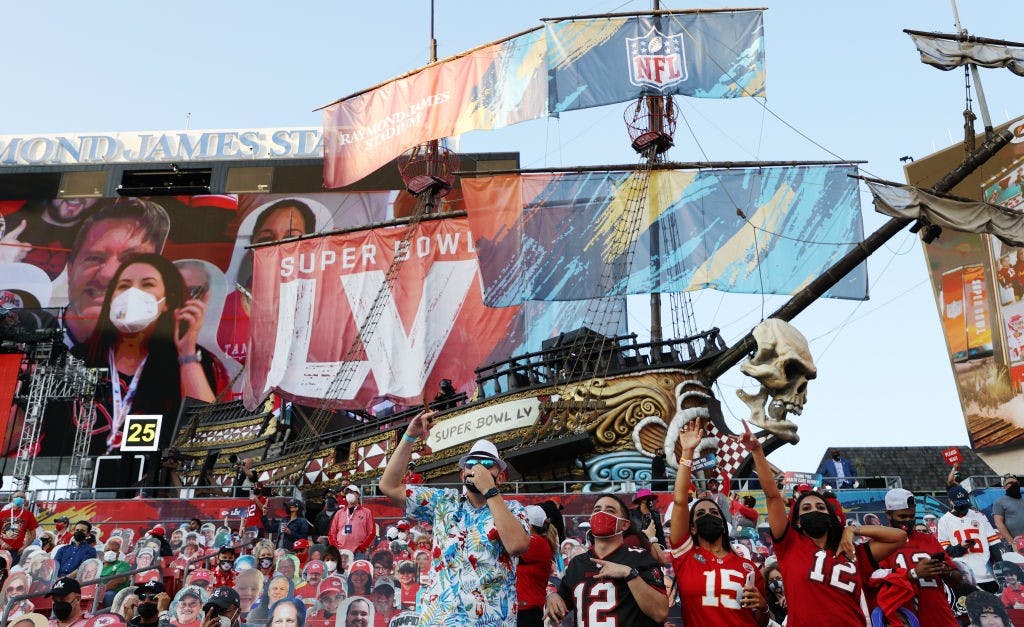Our love of sports is predicated on a natural tension point — two or more opponents, competing against each other for victory on the field of play. In these difficult times, however, there is another point of tension. This is the battle waged between the intense desire of sports fans to return to venues across the country, and health and safety considerations surrounding those venues at full, or even partially full, capacity.
With many collegiate and professional sports leagues in the US finding themselves in a stop-and-start mode, there are lingering questions as to whether it is safe to return. That said, the emotional connection between fans and these events still resonates. According to our research, 84 per cent of sports fans expect sports to come back bigger than ever.
Momentum’s proprietary study tells us that fans are eager to get back to live sports event attendance. The study reports a 300-per-cent increase in US sports fans (from August 2020 to December 2020) who are missing the atmosphere, pride and pageantry surrounding live sports events, with a 317-per-cent increase in those fans specifically missing the energy live sports provide. We also saw an increase of US sports fans who would be willing to attend a sporting event at limited capacity, with 58 per cent of those fans exhibiting a desire to do so.
In some respects, sports have led the way in making live event attendance safe. The state of New York allowed almost 7,000 fans who had tested negative for Covid-19 into Bills Stadium for the 2021 NFL Playoffs, and agreed to adhere to social distancing and contract tracing protocols, with New York Governor Andrew Cuomo hoping to use it as a “demonstration project”.
But there is also a sense of trepidation from fans around safety precautions taken by venues. Our research also illustrated a 217-per-cent growth (over that same time period) in concern among US fans about social distancing measures, hygiene and the health of other attendees, among other considerations.
Moreover, that reluctance has also played out publicly, with fans and media alike debating the decision to allow fans into events at even a reduced capacity, as illustrated by the social media reaction from crowd shots at the 2021 Super Bowl last weekend. While the stadium combined a mixture of fans, vaccinated healthcare heroes and fan cut-outs, as was expected, the reaction was visceral — and therein lies the natural tension point.

Brand involvement
In their return to action, health and safety safeguards were critical for sports properties to operate effectively. This allowed for some non-traditional brands to enter the sponsorship space, like Oura, whose wearable devices, which measures health metrics, were critical to mitigating the spread of Covid-19 during the 2019-20 NBA season restart.
Similarly, existing sponsors assisted a safe return, like the partnership between Honeywell and the NFL’s Carolina Panthers. The brand played a pivotal role in adapting Bank of America Stadium with increased health and safety measures to usher back fans in a reduced capacity this season. The NFL also worked with partner Procter & Gamble to provide PPE bags and hand sanitizer for all Super Bowl attendees, as well as aiding in the disinfection of surfaces at Raymond James Stadium.
That said, the current health crisis has resulted in a reduction of fans’ ability or willingness to purchase goods and services within the sports ecosystem — a demand shock.
However, as we navigate this phenomenon, there is reason for hope. The uncertainty of attendance at these events has also ushered in a willingness for fans to engage with brand integrations at virtual events, with a 250-per-cent growth in US fans’ likelihood to engage with a branded virtual event over that time period.
The power of virtual engagement can further amplify the live event experience, resulting in increased reach for sponsors and rights-holders alike. Our research has shown us that 86 per cent of people globally are interested in attending blended experiences.
That has manifested itself in exponential innovation with respect to the confluence of the digital and physical worlds. Verizon’s rollout of the 5G SuperStadium experience, in conjunction with the NFL, was on display for the Super Bowl as well, and provided an augmented reality experiences of fans’ favorite players and multiple camera angles on the field to create an immersive experience for fans and showcased the robust and innovative technology.
The demand for in-venue engagement isn’t going anywhere, as we have also seen a 242-per-cent growth in US fans who are receptive to branding or signage at a team’s stadium, as well.
As the pendulum shifts back in 2021 and beyond, it will be critical for brands and rights-holders to leverage both physical and digital mediums to reach fans and consumers. It is abundantly clear from our research that the residual impact of the pandemic isn’t going anywhere. It’s incumbent on the industry to adapt and evolve in this new paradigm.